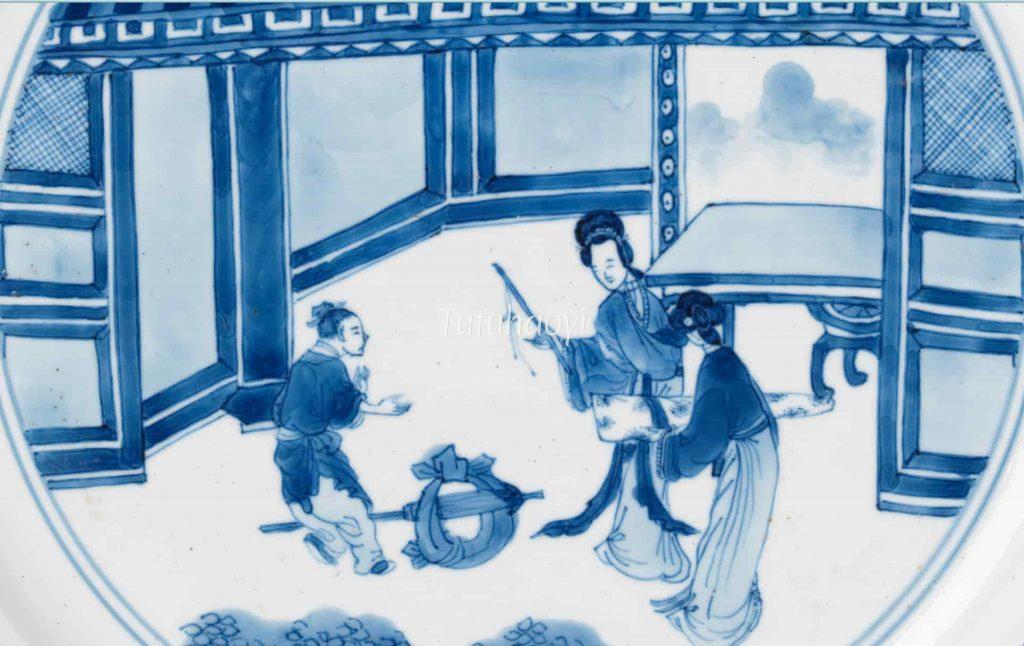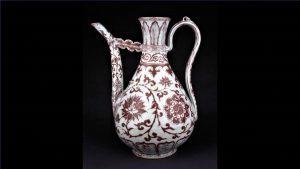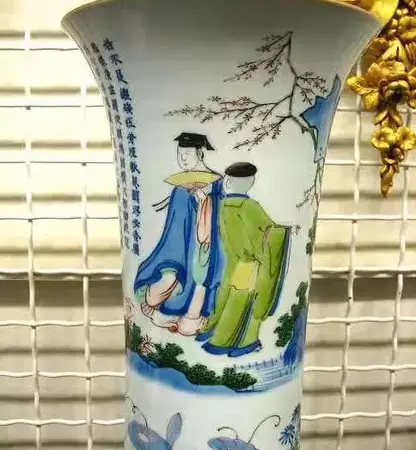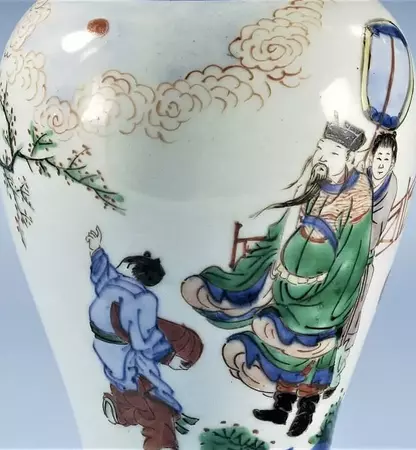Figures and story scenes play an important part in porcelain painting on Chinese ceramic wares from Ming and Qing dynasties. Knowing traditional Chinese literature and legends helps us to appreciate the beauty of antique porcelains and understand Chinese culture and customs in ancient times.
Here is a test. Who are the two pretty girls in the picture below? On this Kangxi blue-and-white covered jar in the collection of Rijksmuseum, it is described as ‘… an interior with a writing desk with two ladies (‘Long Elizas’), one offering a covered qin or zither to a servant.’

Chinese Ceramics in the Collection of the Rijksmuseum, Amsterdam: the Ming and Qing Dynasties, Christiaan Jörg, London: Philip Wilson, 1997, page 109: ‘… an interior with a writing desk with two ladies (‘Long Elizas’), one offering a covered qin or zither to a servant.’
Is it really so? What is actually the story about in this scene? This, in fact, depicts a chapter in a famous Chinese play written in the Yuan dynasty (1271-1368) – Romance of the Western Chamber (西厢记 Xixiang ji). Let’s put a long story short…
Scholar Zhang (张生) on his way to the capital to take civil-service exams fell in love with the beautiful Cui Yingying (崔莺莺), who was stranded in a monastery. They had to be separated because Yingying’s mother only allowed Zhang to marry Yingying after he succeeded in his exams. Half a year passed and, when Zhang won the official honours, he sent the page boy to tell Yingying the good news.

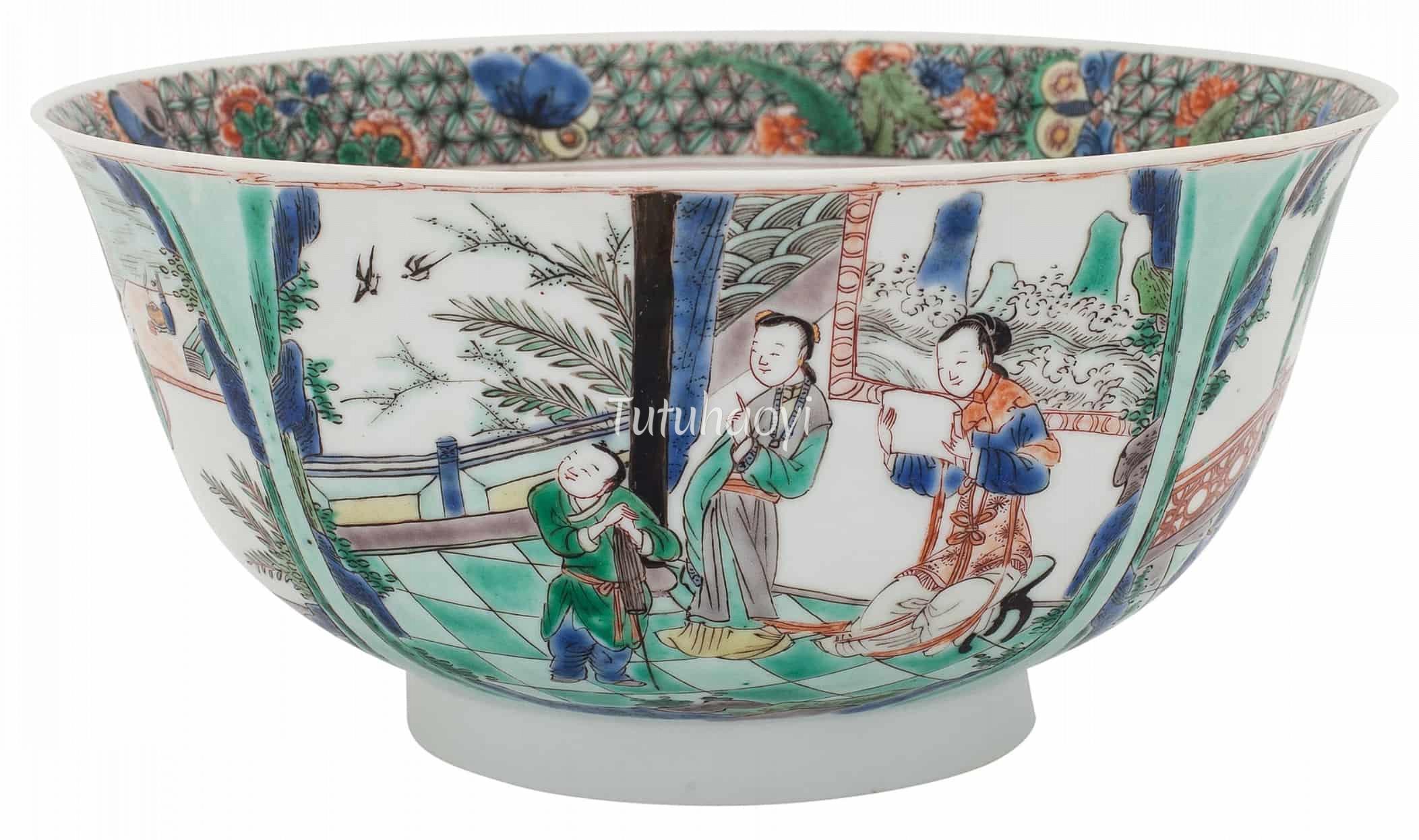
Yingying was thrilled to receive the glad tidings. In return, Yingying sends Zhang some presents as a token of her love for Zhang. A zither as a reminder of the zither music that finally won her over.
European descriptions of this jar refer generically to Yingying and Hongniang (红娘) as “Long Elizas”, an allusion to their elongated figures, rather than identifying them. Thus, a large part of this beautiful story intended by pot painters was lost in the description.
There have been many Chinese porcelain wares in Ming and Qing dynasties depicting various chapters and story scenes in the Romance of the Western Chamber. Even for the same story scene, it has been presented slightly differently due to skill variations and artistic expressions by different pot painters. The following is a typical example:
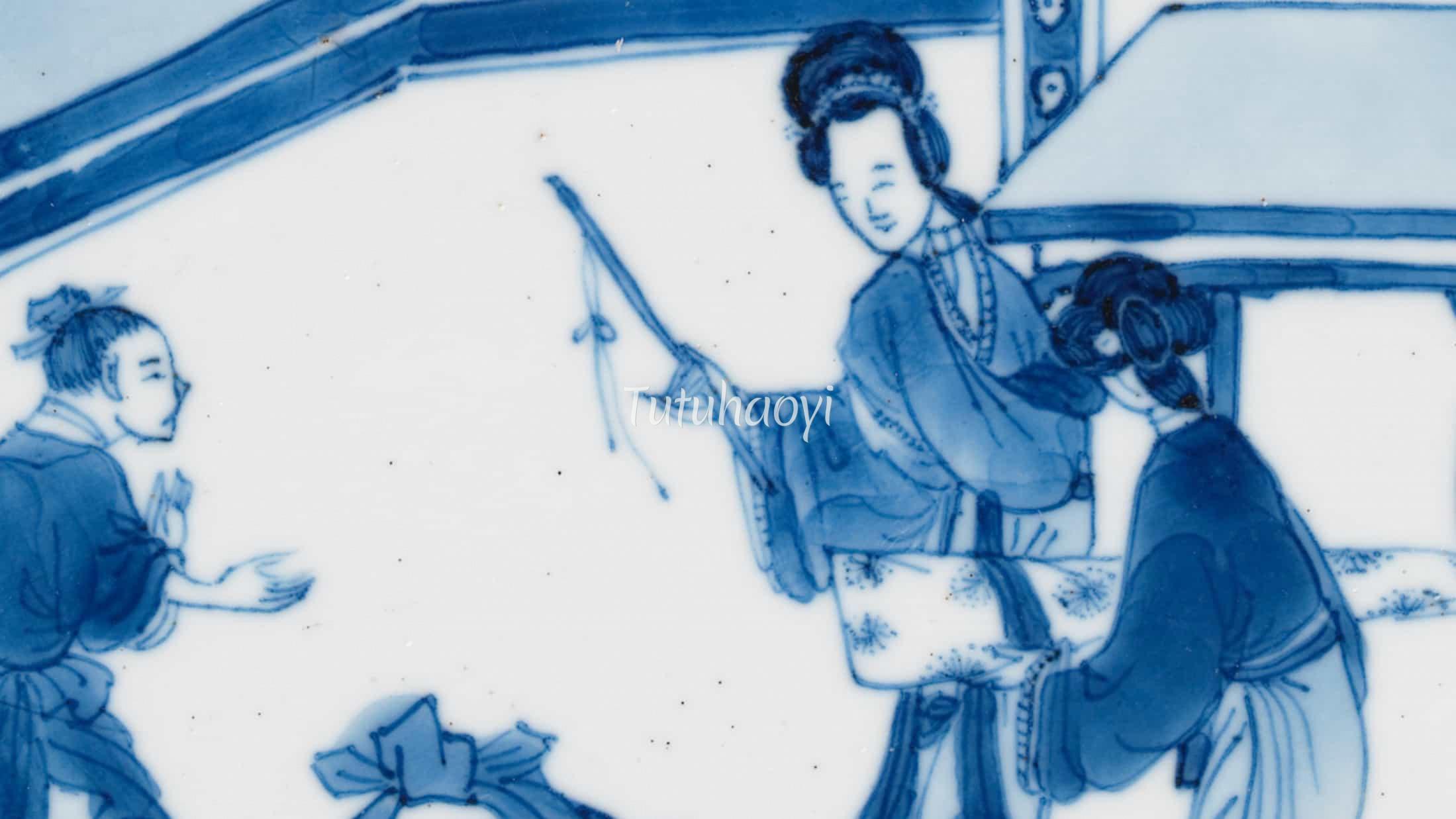
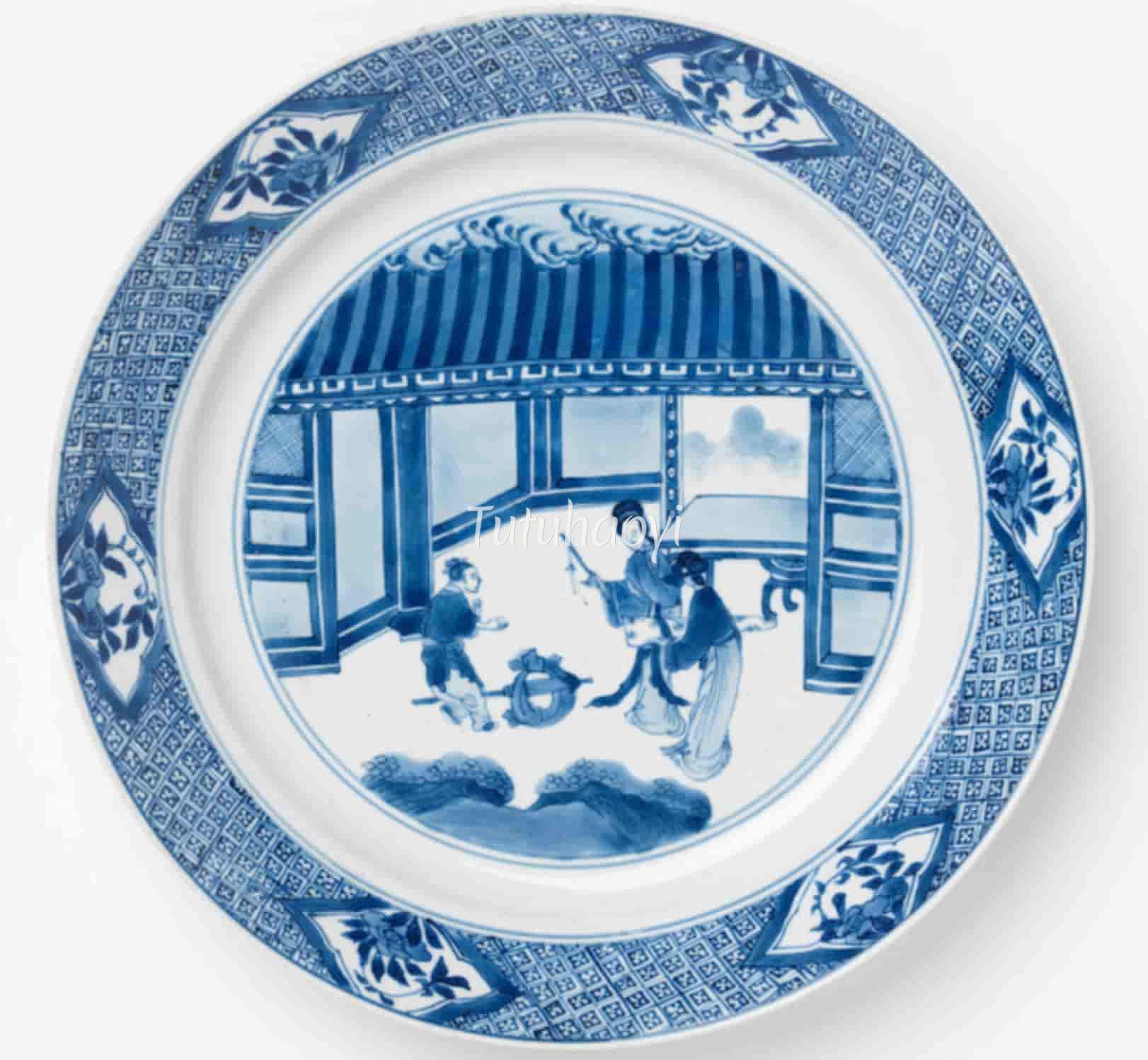
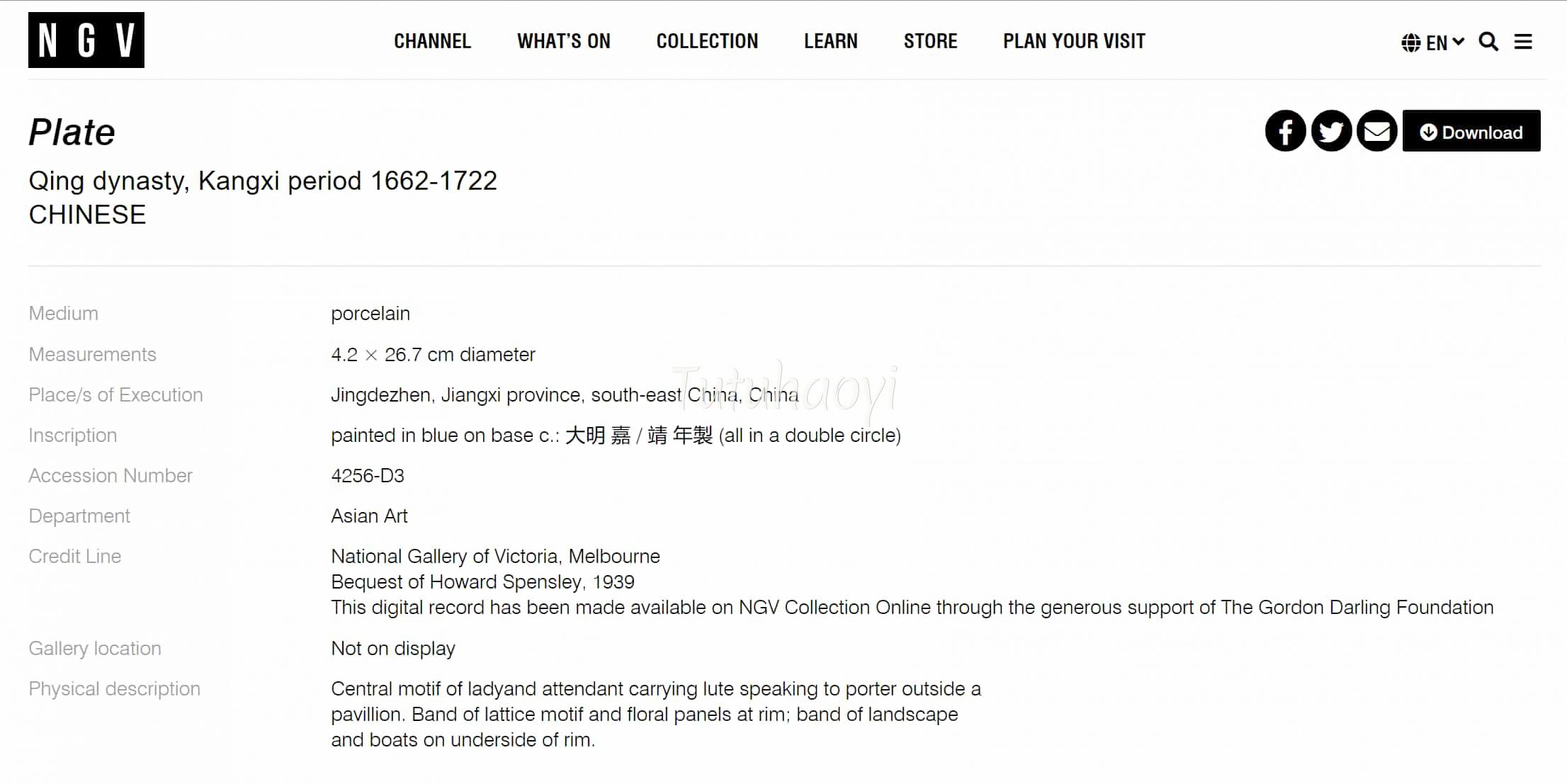
On a dish in the collection of National Gallery of Victoria, Australia, the same story scene described above is depicted, but emphasizing on another gift from Cui Yingying. It was a flute that Yingying played while she was feeling lonely and missing Zhang. The flute was said to be made from a special type of bamboo which bear brown spots – stains of tears shed by ancient sisters who lost their sage-king husband.
The findings and opinions in this research article are written by Dr Yibin Ni.
